
Performance Analysis
It’s important to realise before we go into our air-cooled analysis that the Obsidian 900D is first and foremost a water-cooling case. As such, you can’t really compare it to the likes of the SilverStone FT02 or Cooler Master HAF X. A vast, vast majority of owners will be water-cooling their hardware, so thermals in the usual sense are somewhat less important than a case entirely reliant on air cooling.However, every high-end system needs a modicum of airflow so these results are a good indicator of how the non water-cooled bits will fare. The CPU delta T we recorded of 48°C was up with the big boys, bettering the likes of the Xigmatek Elysium, Fractal Design Define XL R2 and matching the NZXT Phantom 820. The GPU delta T of 49°C was a little less awesome, with Cooler Master’s HAF X knocking over 10°C of this result with the Xigmatek Elysium and SilverStone FT02R-W also giving it a bloody nose.
Click to enlarge
However, the Obsidian 900D again matched the likes of NZXT’s Phantom 820 and the Fractal Design Define XL R2. The Obsidian 900D’s fans were obviously locked without any fan speed controller but the AF series fans proved to be very quiet, probably sound-deadened by the huge chassis as well. Again this is possibly a moot point given that typical PCs will likely have a fan controller, but we certainly saw no vibration or other issues.
Conclusion
Cases like the Obsidian 900D come along only a few times every decade. It’s not going to revolutionise the case industry and it certainly won’t sell nearly as well as Corsair’s mid-range cases such as the Carbide 500R. But to dismiss the Obsidian 900D for price alone is to completely miss the point. It’s Corsair’s flagship case and is aimed almost entirely at water-cooling enthusiasts, and the more fat-walleted ones at that.
It’s not in epic leagues when it comes to build quality - Corsair has said that the side flap issue amongst others should be fixed with retail samples - but much of this appears to be down to the sheer size of the case. We saw similar things with the TJ11 and Xigmatek Elysium so to significantly mark down this case would seem a little unfair given most other super-size cases have similar quirks. The sheer expansion and water-cooling possibilities make it Corsair’s most interesting case to date, but even so, there are a couple of things missing. There’s no fan controller for starters. Most people use some sort of fan control with water-cooled systems for the simple reason there are usually a lot of fans involved and tuning them down a bit can massively reduce noise while impacting little on cooling.
Click to enlarge
Given Corsair’s prowess in the cooling and fan control market with its all-in-one liquid coolers, this makes the Obsidian 900D appear lacking, especially when compared to NZXT’s high-end cases. It’s likely that the company assumes you’ll want to invest in one of its Link fan controllers, but at nearly £300 we expected more. Also, despite its size, there are relatively few areas to mount tube reservoirs and pumps internally. The lack of a large mid-section plate like we have with other large cases means that there’s only one small place to logically mount a pump if you’re not opting for a pump/reservoir combo. That said, it’s still a superb case for a water-cooled PC.
In terms of raw value, the Obsidian 900D does face some stiff competition. The likes of the TJ07 and NZXT’s Phantom 820 are cheaper – considerably so for the NZXT with the main issue being that unless you’re going for a massively overclocked triple or quad graphics card system, you simply don’t need the radiator support the Obsidian 900D offers either. Given its price tag, though, it’s important to remember that owners of these systems are likely to be the potential buyers of Corsair’s new monster case anyway.
The Obsidian 900D isn’t without its faults then. However, it does what Corsair has clearly designed it for, which is to compete with the best water-cooling cases out there. The only other case we’ve tested that can compete in terms of water-cooling support is SilverStone’s TJ11, but even it requires a modicum of modding to get there. Perhaps the biggest result for Corsair is how it offers similar features to the TJ11 but costs a whopping £200 less.

-
Cooling20 / 30
-
Features18 / 20
-
Design24 / 30
-
Value18 / 20


MSI MPG Velox 100R Chassis Review
October 14 2021 | 15:04

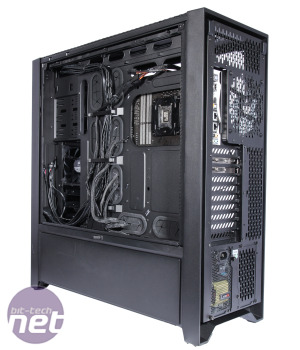
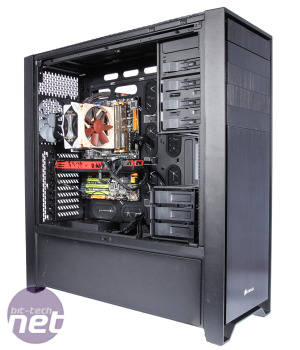
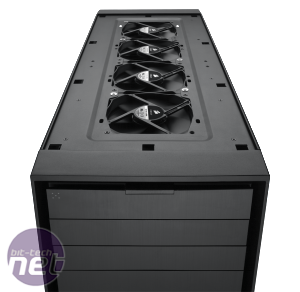
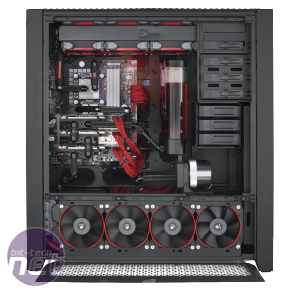
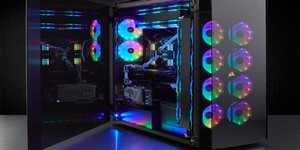
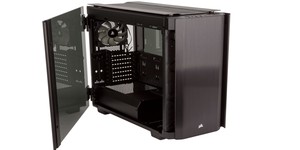
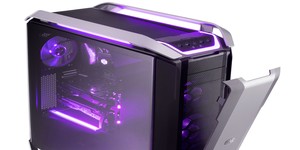





Want to comment? Please log in.